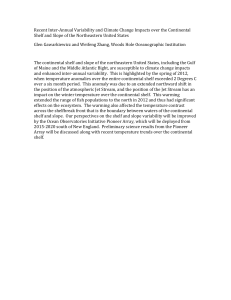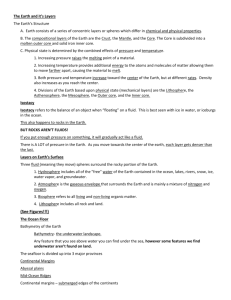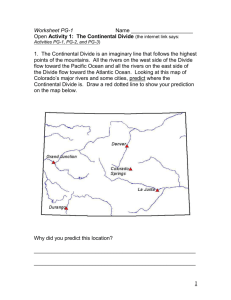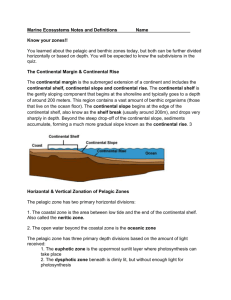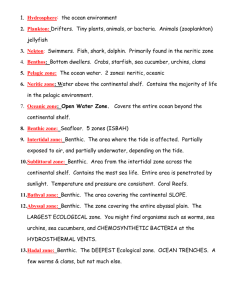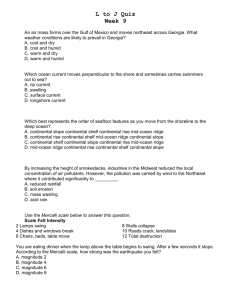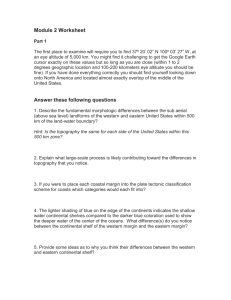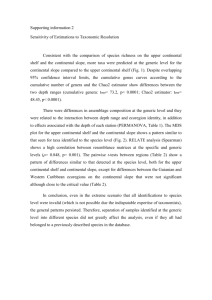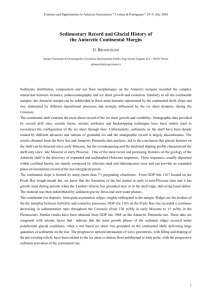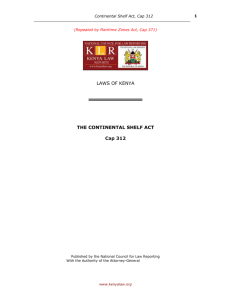Bathymetry assign edit
advertisement
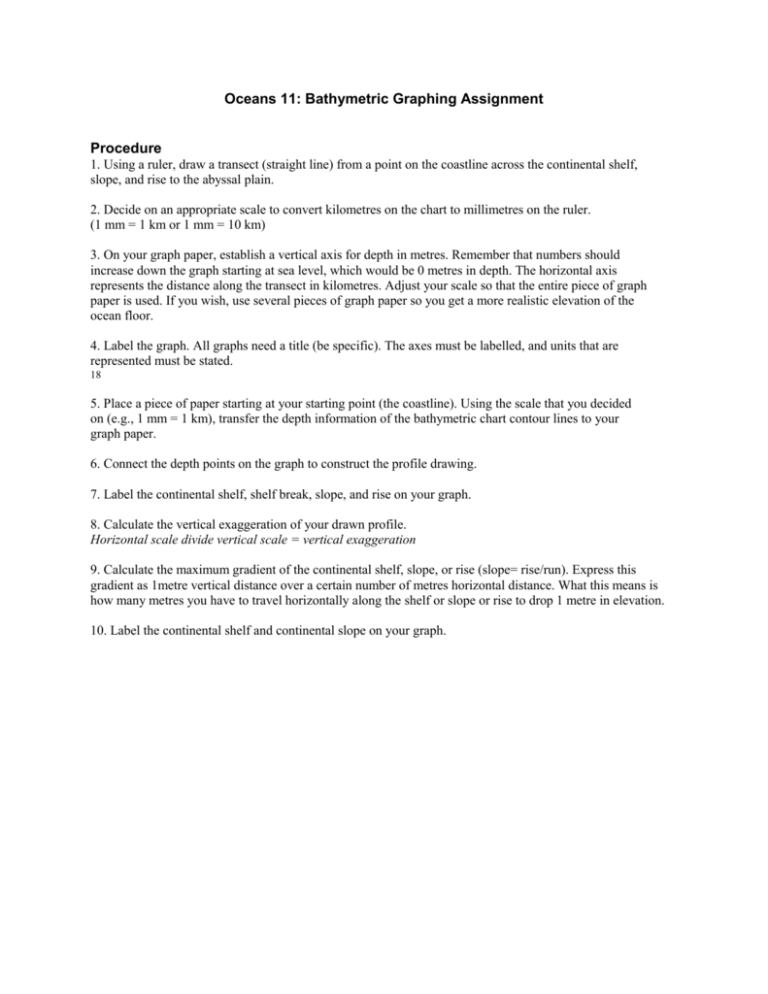
Oceans 11: Bathymetric Graphing Assignment Procedure 1. Using a ruler, draw a transect (straight line) from a point on the coastline across the continental shelf, slope, and rise to the abyssal plain. 2. Decide on an appropriate scale to convert kilometres on the chart to millimetres on the ruler. (1 mm = 1 km or 1 mm = 10 km) 3. On your graph paper, establish a vertical axis for depth in metres. Remember that numbers should increase down the graph starting at sea level, which would be 0 metres in depth. The horizontal axis represents the distance along the transect in kilometres. Adjust your scale so that the entire piece of graph paper is used. If you wish, use several pieces of graph paper so you get a more realistic elevation of the ocean floor. 4. Label the graph. All graphs need a title (be specific). The axes must be labelled, and units that are represented must be stated. 18 5. Place a piece of paper starting at your starting point (the coastline). Using the scale that you decided on (e.g., 1 mm = 1 km), transfer the depth information of the bathymetric chart contour lines to your graph paper. 6. Connect the depth points on the graph to construct the profile drawing. 7. Label the continental shelf, shelf break, slope, and rise on your graph. 8. Calculate the vertical exaggeration of your drawn profile. Horizontal scale divide vertical scale = vertical exaggeration 9. Calculate the maximum gradient of the continental shelf, slope, or rise (slope= rise/run). Express this gradient as 1metre vertical distance over a certain number of metres horizontal distance. What this means is how many metres you have to travel horizontally along the shelf or slope or rise to drop 1 metre in elevation. 10. Label the continental shelf and continental slope on your graph.
